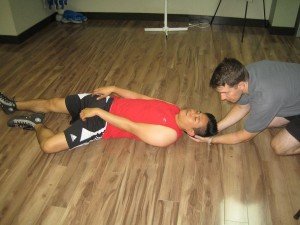The brain is surrounded by layers of tissue and a skull to protect it from serious injuries. However, any external force like a blow, jolt, bumps or skull penetration can damage the brain and will affect its functioning. This can become a serious and emergency situation that will require an urgent medical attention.
Traumatic brain injury (TBI) can result from a number of factors. It can result from motor vehicle accidents, falls, physical assaults and accidents during sports and recreational activities. It can also occur even in the workplace. The most common symptoms of a serious brain injury include change in the level of consciousness, bruises around the eye or behind the ear, inability to recognize people or surroundings, visual changes, drainage of clear fluid from the nose or mouth and skull deformities.
What are the types of a TBI
Penetrating TBI includes head injuries wherein a foreign object enters the brain and damages its parts. The damage is only localized and focal in the route of the foreign object as it enters into the brain. The specific signs and symptoms may vary depending on the affected parts.
Closed head injuries are those that result from a blow, jolt or bump without penetration of any foreign object. This type of TBI can cause either primary TBI or secondary TBI. Primary TBI is a head injury that occurred at the time of the impact such as skull fracture, contusions, hematoma, lacerations and nerve damage. Secondary TBI on the other hand, occurs when the damage to the brain (or a particular part of the brain) evolves over time after the traumatic event. This includes brain swelling, increased intracranial pressure, lung and cardiac changes as among many others.
Recognition of TBI and First Aid Management

- Check for the person’s head and face for bleeding or deformities; also check for clear fluid drainage from his nose or mouth.
- Evaluate the person’s consciousness by asking questions (ask for the person’s name, how does the person feels, the place where the person is, etc.).
- Shine a light into the person’s eyes and check for the pupil response.
- Observe for vomiting and paralysis.
Word of Precaution: Never move the person until the medical team arrives.
What to do upon recognition of a possible TBI
- Call for help
- Check for the airway and breathing of the person. If there is an obstruction of the airway, do jaw thrust maneuver or tilt the head back (and support it) until normal breathing returns.
- Apply direct pressure to the wound using sterile gauze or clean cloth except for skull fractures.
- If you notice that the person is not breathing, check for the pulse. If there is none, do cardiopulmonary resuscitation. CPR training will come very useful in emergency situations like this.
